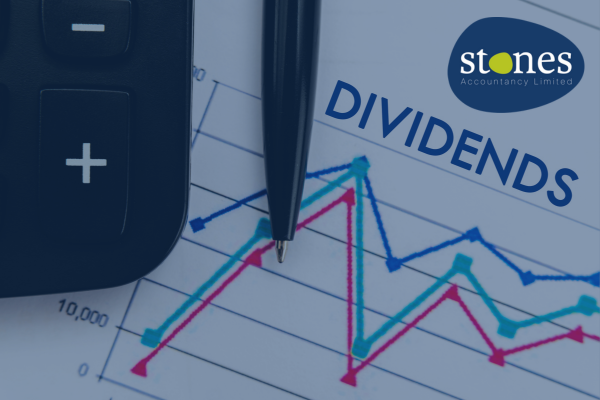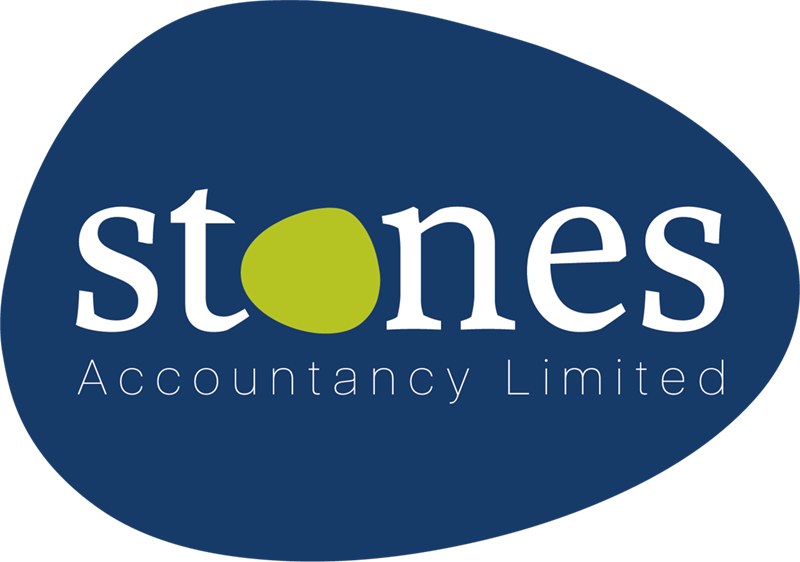As a small business owner, determining how to pay yourself can be a perplexing task. Stones Accountancy Ltd is here to guide you through the intricacies of small business dividends in the UK, ensuring you have a clear understanding of the process

What is a Dividend?
A dividend refers to a payment made by a limited company to its shareholders when it has generated profits. After settling business expenses, liabilities, and taxes like Corporation Tax and VAT, the remaining funds can either be reinvested into the company or distributed as dividends among the shareholders.
How Much Can You Pay Yourself?
Dividend payments are typically distributed between shareholders based on the percentage of shares owned, For instance, if you own 50% of your company’s shares, you should receive 50% of each dividend distribution.
It’s important to note that you can only pay yourself a dividend if your limited company has sufficient retained profit to cover it, after settling all expenses and liabilities.
Additionally, you should ensure there is enough money left in the company to meet day-to-day cash flow requirements. Paying out more than the available profits from the current and previous financial years could be deemed illegal, leading to penalties imposed by HM Revenue & Customs (HMRC).
In cases where your company doesn’t generate profits, you’ll need to pay yourself through a salary instead.
Understanding Dividend Tax Rates
While limited companies are not taxed on dividend payments issued, shareholders may be subject to tax on the dividends they receive based on their personal circumstances and other earnings.
What is the Tax-Free Dividend Allowance now?
Every individual has a tax-free dividend allowance, which means you only pay tax on dividends exceeding this threshold. For the tax year 2023-2024, the dividend allowance stands at £1,000. this will decrease to £500 for the tax year 2024-2025.
How do you calculate Dividend Tax?
The amount of tax you pay on dividends above the £1,000 allowance depends on your Income Tax band. To determine your Income Tax band, you must combine your dividend earnings with your other income and salary.
- Basic rate taxpayers (20% Income Tax band): Dividends over the allowance are taxed at 8.75%.
- Higher rate taxpayers (40% Income Tax band): Dividends over the allowance are taxed at 33.75%.
- Additional rate taxpayers (45% Income Tax band): Dividends over the allowance are taxed at 39.35%.
To provide a clear example, let’s assume you earn £30,000 in total income, with £10,000 received as dividends and £20,000 as an annual salary. After deducting the personal allowance of £12,570, your taxable income amounts to £17,430. As this falls within the basic rate tax band, you would pay 20% tax on your salary and 8.75% tax on the remaining £9,000 of dividends.
How should you report Dividend Tax?
If you already complete a self-assessment tax return, it is essential to declare dividends as part of the process, even if the amount is below the dividend allowance. However, if you don’t typically file a self-assessment tax return, how you pay any tax owed on dividends depends on the amount of dividend income received in the tax year.
- £10,000 or less in dividends: You should check with your accountant or HMRC, You may be able to pay through your current PAYE Scheme,
- More than £10,000 in dividends: Register for self-assessment and file a tax return.
What is the Proper Procedure for Paying Dividends?
To ensure your dividend payments are legally compliant and well-documented, you should:
- Hold a directors’ meeting to declare the dividend, even if you are the sole director and shareholder. Maintain detailed records of the meeting, including minutes.
- Generate a “dividend voucher” for each dividend payment, containing essential information such as the company’s name, payment date, names of shareholders, and the dividend amount.
- Provide a copy of the dividend voucher to all recipients and retain a copy for your company’s records.
How often can I pay Dividend Payments?
You can pay yourself dividends as frequently as desired, typically monthly or quarterly. However, it is crucial to ensure that sufficient funds remain in the business after taxes, expenses, and liabilities to cover future expenses.
Choosing Between Salary and Dividends, what’s Best?
As a limited company director, you have several options for paying yourself: salary, dividends, or a combination of the two. Each method has its advantages and disadvantages.
Salary:
- Can be claimed as an allowable expense, reducing Corporation Tax.
- Helps build entitlement to benefits such as pension and maternity benefits.
- Can support applications for credit.
Dividends:
- Exempt from National Insurance contributions.
- Attract lower rates of Income Tax.
- Can be paid at any frequency.
Combination of Salary and Dividends:
Many directors opt for a blend of salary and dividends, offering flexibility and potential tax advantages. Seeking advice from an accountant can help determine the optimal combination and ensure proper tax compliance.
Deciding how to pay yourself as a business owner involves careful consideration and adherence to HMRC regulations. By understanding dividend tax rates, following the correct payment procedures, and making informed choices between salary and dividends, you can ensure fair compensation while maximising tax efficiency. Always maintain accurate records and seek professional guidance to stay compliant and organised in your financial operations.
How Stones Accountancy can help!
Looking for expert guidance on small business taxation and dividends? Contact Stones Accountancy Ltd today! Our experienced team can help you understand the complexities of dividend tax, ensure compliance, and maximise tax efficiency for your business.
Schedule a consultation now and take control of your financial future.

